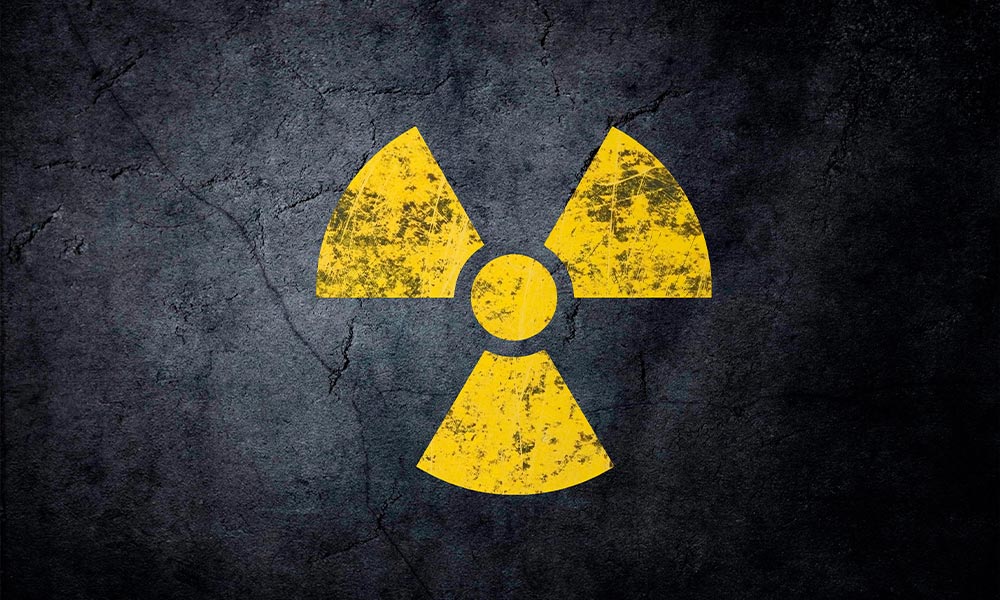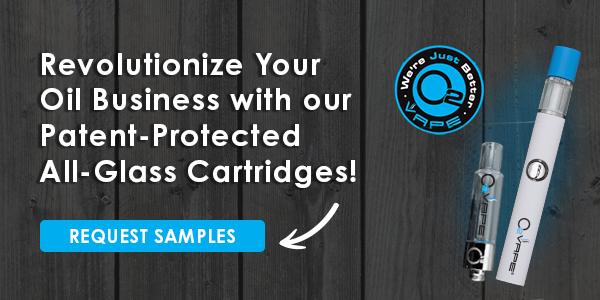
Science
Irradiated Cannabis is Real: Now What?
While irradiated cannabis may sound scary, the weed industry says not to worry. Consumer advocacy groups, however, are raising concerns.
Is irradiated cannabis really a thing? If you’re in Canada, the answer is likely “yes,” and the practice is catching on in throughout the US where marijuana is legal. Even while cannabis producers and the irradiation industry keep assuring us that it’s safe as a means to “remediate” harvested flower—reduce bacteria, molds and other pests—they point to decades of employment of irradiation to extend the shelf-life of food products and keep them free of bugs and pathogens.
Cannabis consumers should be aware, however, that food irradiation has never lived up to industry expectations since it was approved for widespread use in this country in the 1980s. And some consumer advocacy voices are skeptical that this is the way for the cannabis industry to go.
Industry Reassurances
Irradiated cannabis got some rare media coverage when Forbes ran a write-up on the practice April 30. The piece focused on the example of EOS Farms, a licensed producer in Massachusetts, which uses an irradiating device supplied by Rad Source Technologies of Georgia. Rad Source is one of the top producers of such devices for the US cannabis industry, with clients in several states, including California, Colorado, Oregon, Michigan, Illinois and Washington.
The article cites proponent assertions that for immuno-compromised patients, i.e. cancer survivors, remediation techniques such as irradiation “could be the difference between a safe smoke and a life-threatening fungal infection.”
It also notes the special imperative for such remediation in Massachusetts, which has stringent regulations, limiting the total amount of bacteria and other life forms in cannabis. This is in contrast to states such as California, that just bar or restrict specified harmful bacteria and molds like e. coli and aspergillus.
The story notes other widely used remediation methods, such as ozone and hydrogen peroxide. But EOS Farms went with irradiation because of its supposed lack of “residual effect”—leaving the terpene and cannabinoid profile intact.
The article acknowledges consumer wariness of “nuclear weed,” but portrays a high probability that such critics have themselves smoked irradiated cannabis—if unknowingly.
Origins in the Military-Industrial Complex
The cannabis industry has adopted the practice of irradiation from the food industry—where there has similarly been no lack of criticism.
Food irradiation is the process of exposing boxes or pallets of food products to high-energy gamma rays, electron beams or X-rays (all of which are millions of times more powerful than standard medical X-rays) to break apart the bacteria, spores and insects. The source is generally the artificially produced (not naturally occurring) radioactive isotope cobalt-60. It doesn’t actually make the food radioactive (barring any mishap).
Rad Source markets its products as “non-nuclear irradiator solutions”—meaning that devices such as its 420 Cannabis Remediation System utilize an electric photon generator rather than a radioisotope such as cobalt-60. The device doesn’t produce any radiation when not in use, and there’s reduced risk of contamination either through mishap or in disposal.
However, this is a comparatively recent innovation and it’s still the same X-rays that are emitted from the device—“non-radioisotopic” might be the better term than “non-nuclear,” strictly speaking. Concerns about disposal were raised after the Goiânia accident in Brazil in 1987, when discarded radiological materials were found and handled by local residents, resulting in the deaths of four people and the contamination of some 200.
Irradiators that use cobalt-60 fall under the oversight of the US Nuclear Regulatory Commission, and this method has long been the norm in the industry. The process has been around for the past 60 years but was for the first three decades largely under study by the US Army, and only slowly taken up for study by the commercial sector. The Food & Drug Administration (FDA) permitted the use of irradiation for potatoes and wheat in the 1960s, but it wasn’t widely adopted.
At first, the process was explicitly portrayed as a commercial use for nuclear waste products. It was the US Energy Department, which produces nuclear weapons for the Pentagon, that funded the irradiation test facilities and provided them with radioactive isotopes. A 1982 editorial boosting food irradiation in the Toronto Globe & Mail, cited in a study on the website of the International Atomic Energy Agency, explicitly stated: “Acceptance of gamma processing would mean a great deal to the troubled nuclear industry, which is aggressively marketing the process as a means of selling the by-products of nuclear research.”
Consumers Say “No”
Irradiation was only approved by the FDA for general use in the US food industry in 1986. This approval was met with protest by many consumer advocates, who noted studies finding that radiation can reduce nutrients and create “unique radiolytic products” in the treated organic material. Formaldehyde has been found to form in irradiated starch, benzene in meat, peroxides in plant tissues and formic acid in sucrose. These are of varying toxicity (benzene is a carcinogen), and the quantities produced were found to be acceptably small by the FDA. But studies also found that irradiation can paradoxically increase the susceptibility of treated foods to carcinogenic aflatoxins.
In 1986, the FDA regulators approved to require that all irradiated foods must display the international symbol for irradiation. The FDA website states: “Look for the Radura symbol along with the statement ‘Treated with radiation’ or ‘Treated by irradiation’ on the food label.”
The Radura was certainly designed by slick PR pros. It’s an innocuous stylized image of a flower in a circle, with no hint of any symbology (e.g., the atom, the radioactivity warning sign) popularly associated with radiation. And, significantly, there were loopholes: Ingredients in processed foods, and all spices, are exempt from the labeling requirement.
Yet, you’ve probably never seen the Radura in any supermarket. Why? Consumer advocacy group Food & Water Watch offers some possible reasons. They report that consumer feedback indicated that taste and texture were both negatively impacted, especially in irradiated meats. And there was apparently reluctance to purchase even irradiated vegetables.
A 2006 Food & Water Watch report on the state of food irradiation found “an industry in free fall.” It stated that “the food irradiation industry appears dead in the water—at least for now. Very few irradiated items are actually sold to consumers, representing a virtually invisible fraction of food sales nationwide.”
The report noted that what had been the industry’s leading company, SureBeam, filed for Chapter 7 bankruptcy (complete liquidation, not reorganization) in 2004.
In approving the process, the FDA itself noted that “irradiation causes certain changes in foods…that…can affect the flavor or texture…in a way that may be unacceptable to some consumers.”
Indeed the industry’s own Food Irradiation Update Newsletter reports that of irradiated food products marketed in the US in 2010, spices accounted for the overwhelming majority—80,000 tons out of 103,000. Not coincidentally, we may assume, that product doesn’t have to be labeled.
After the 2001 anthrax terror attacks, in which deadly spores were mailed to Congressional offices, incoming mail at targeted federal buildings in Washington, DC was treated with massive doses of radiation—far greater, it must be noted, than those typically used in the food industry. Mailroom handlers started complaining of skin irritation, headaches and nausea, as well as tingling, bleeding and a metallic taste in their mouths. These reports dealt a further blow to food irradiation’s public image.
Jaydee Hanson, policy director at the Center for Food Safety, reached by Cannabis Now, states flatly: “Stores didn’t want to display that symbol.”
Generally skeptical of the practice, he also stresses that any handling of radioactive materials poses risks. “You don’t want workers being irradiated, in addition to the problems with the food.”
Hanson ultimately believes the entire mentality represented by irradiation and other forms of remediation is backwards. “We believe there are ways to keep our food safe without irradiation,” he says. “Killing the pathogens after they’re in our food is the wrong approach. The FDA should be working to make sure the pathogens don’t get into our food in the first place.”
The Preventative Principle
A similar perspective is advanced by Kyle Baker, co-founder of Illinois-based Ecobuds, an industrial hygiene service for indoor cultivation facilities, and its newly launched sibling company CleanTheory, offering similar expertise for hydroponic horticulture.
Baker acknowledges that irradiation “is generally regarded as safe” and is an “acceptable form of pathogen removal” along with alternatives such ozonation—exposing product to ozone. But he adds: “There’s degradation of materials in any type of remediation. Ozonation creates formaldehyde from organic compounds, which you don’t want to breathe in. Even irradiation isn’t fully successful without a very large dose, thereby decreasing product quality. By definition, remediation means the product didn’t meet quality standards acceptable for market.”
Baker continues. “The ultimate control mechanism is prevention or avoidance,” he says. “That’s why our focus is making sure facilities are clean, using Good Manufacturing Practice. We need GMP standards for the cannabis industry to make sure we’re putting out product as safely as possible.”
For Baker’s business, this means treating equipment and facilities (not the actual product) with chlorine dioxide, and consulting on best practices. “We make sure clients change the filters in HVAC systems, and supply them with equipment to increase filtration, increase the air changes per hour. This is what helps clients have less disease and a safer product that complies with standards and is safe for employees.”
Baker sees this in terms of managing the “bioaerosol process system”—the relationship between soil, water, air and light—to replicate natural conditions.
“In the outdoors, lightning strikes create ozone that kills airborne bio-aerosols. There are natural things that occur on Earth that keep a check on antagonists. We try to recreate that balance, for instance, by making sure fertigation systems are clean,” he says, referring to irrigation systems that also deliver fertilizers.
The Phoenix-based Foundation of Cannabis Unified Standards (FOCUS) is working to build an eventual federal framework for a legalized industry. FOCUS is in a formal partnership in this endeavor with the Association of Food & Drug Officials (AFDO), an organization that dates back to the establishment of federal regulation of these industries with passage of the 1906 Pure Food & Drugs Act.
Lezli Engelking, president of FOCUS since its 2014 founding, has this blunt assessment about irradiated cannabis: “My assumption is that it’s way more common than it should be.”
In Engelking’s view, an overemphasis on remediation reflects the vacuum in federal regulation.
“Usually, there’s a federal agency that provides guidelines for an industry—whether it’s the FDA, EPA or USDA,” she says. “But cannabis is only regulated at the state level, without any federal oversight. With voter initiatives, states had to build programs from scratch, often by people with no background in cannabis. So, there weren’t any guidelines, just testing requirements. Cannabis producers have more rules and regulations than the oil and gas industry, but no official guidelines for how to conform to them. If the product doesn’t meet standards, small farmers who can’t afford to sacrifice a harvest have to remediate. But remediation is reactive in nature. If they did things right the first time, they wouldn’t have to remediate.”
The lack of federal oversight also means that irradiated cannabis policy is left to the states—few of which seem to have provided much clarity. Nevada attempted to impose labeling of irradiated cannabis with the Radura. But Rad Source petitioned the Nevada Cannabis Compliance Board to drop this requirement, noting that the FDA labeling rule only applies to food, not drugs—and arguing that cannabis is a drug, not a food. The requirement was indeed dropped.
Engelking also notes that while the FDA categorizes irradiation as “generally recognized as safe” (GRAS), “it’s recognized as safe for the way its being used. But if you’re smoking flower that’s been treated, it’s different from food. There’s a lot of research on this in the food industries, but not the cannabis industry. When you combust and inhale something, it’s a different reaction, and there’s not a lot of good data yet. We need better data on whether irradiated cannabis changes the chemical profile of the flower, and whether it impacts the terpene and cannabinoid profile, too.”
She concludes by emphasizing what she said a few minutes ago: “If operators knew how to prevent growing cannabis with mold or pests, they wouldn’t even have to go through that step.”
Is Irradiated Cannabis Organic?
The absence of unified national standards is especially critical where the question of organic certification is concerned. USDA standards don’t consider irradiated foods organic. But of course, there’s no legal organic certification for the cannabis industry in the US because of its federally prohibited status.
One of the few studies on the effects of irradiated cannabis was undertaken in 2016 by Dutch researcher Arno Hazekamp and published in the journal Frontiers in Pharmacology. It found: “The effect of gamma-irradiation was limited to a reduction of some terpenes present in the cannabis but keeping the terpene profile qualitatively the same. Based on the results presented in this report, gamma irradiation of herbal cannabis remains the recommended method of decontamination, at least until other more generally accepted methods have been developed and validated.”
In an implicit acknowledgement of continued consumer wariness, the study noted that the corporate euphemism game is continuing in Canada: “To cushion the impact on their customers, the obscuring term ‘cold pasteurization’ was introduced when, in fact, gamma irradiation treatment was applied.”
Federal legalization has made cannabis irradiation far more widespread in Canada than the US. Health Canada officially recommends irradiated cannabis as a method of marijuana remediation. Canadian cannabis regulations do mandate that edibles made from irradiated bud be labeled—although not smokable or vape products. Yet, in a seeming contradiction, Canada’s food irradiation regulations are far more restrictive than those in the US—only potatoes, onions, wheat and flour may be irradiated.
Clearly, many more studies are needed. But Ronnie Cummins, international director of Organic Consumers Association, tells Cannabis Now: “We wouldn’t recommend allowing irradiated cannabis to be considered organic. USDA rules on organic production and labeling, the culmination of a decades-long mass grassroots-based consumer and farmer campaign, prohibit the use of GMOs, toxic pesticides, chemical fertilizers, sewage sludge and irradiation in organic production.”
Pointing to his group’s “What’s Wrong with Food Irradiation” page, Cummins says: “Irradiation of foods, fiber and cannabis products, utilizing the waste products of the nuclear industry, pose serious risks for human health and the environment, and serve to legitimize the dangerous practices of the nuclear power and nuclear weapons industries. The Organic Consumers Association urges cannabis growers to avoid irradiation and instead to certify their products as ‘USDA Organic’—thereby guaranteeing consumers that their cannabis is free of GMOs, toxic pesticides, chemical fertilizers, sewage sludge and irradiation.”


























